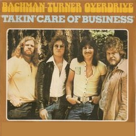The end of one year and the start of another provides a perfect opportunity to take stock — in this case, to examine total shareholder returns for the institutional and individual investors holding stock in oil and gas producers. As it turns out, 2023 was a mixed bag, with gas-focused E&Ps generally benefiting from a rebound in gas prices (current and future), oil-focused companies taking a hit, and diversified producers ending up somewhere in between. In today’s RBN blog, we continue our review of E&Ps’ total shareholder returns (TSR) with a look at Gas-Weighted and Diversified E&Ps.
Daily Energy Blog
According to the World Wildlife Fund, the Javan rhino and the Amur leopard top the global list of most endangered species. Broadening the scope, in 2014-20 we probably would have added the E&P investor to the list, as shareholder returns plunged deep into negative territory for seven consecutive years on volatile commodity prices and massive industry overspending. Almost miraculously, a combination of higher prices and a strategic shift to distribute cash flow to equity holders resulted in record shareholder returns that brought investors back into the fold. However, weakening prices and significant increases in investment have dramatically shrunk returns this year. As we discuss in today’s RBN blog, total shareholder returns in 2023 were mixed: good for gas-focused E&Ps but less so for diversified and oil-focused producers.
It may be considerably smaller in scale than the recent ExxonMobil/Pioneer and Chevron/Hess megadeals, but Occidental Petroleum’s announcement that it will acquire privately held CrownRock LP for $12 billion is remarkable in its own right. Among other things, the deal will give Delaware Basin-focused Oxy a strong foothold in the absolute core of the Midland Basin, supercharge its free cash flow and — despite increasing Oxy’s debt in the short term — provide a pathway for the company to return much more money to shareholders via dividends and stock buybacks in the years ahead. In today’s RBN blog, we examine Oxy’s planned acquisition of CrownRock and what it means for the acquiring company and the Permian itself.
Despite dreams of a white Christmas and a “soft landing” for the U.S. economy, there’s a lot going on in the world — much of it upsetting and even gut-wrenching. As for energy, crude oil prices have been sagging after a brief rise and natural gas prices, while up from their lows, remain less than stellar — and it seems things could get far worse in the blink of an eye. All of that has combined to make folks cautious and wary, and that’s impacting how oil and gas producers spend — or hoard — their money. In today’s RBN blog, we analyze U.S. E&Ps’ increasingly conservative cash allocation despite rising returns in Q3 2023.
The cacophony of Black Friday promotions may make us all wonder if the “giving thanks” part of the fourth Thursday of November has been subsumed by rampant consumerism. But we suspect that E&P executives sat down to more traditional celebrations of gratitude as the upstream part of the oil and gas industry rebounded nicely in Q3 from five consecutive periods of declining profits and cash flows. In today’s RBN blog, we analyze Q3 2023 E&P earnings and cash flows and provide some perspective on the past and future profitability of U.S. oil and gas producers.
Much like their upstream counterparts, midstream companies have shifted to fiscal conservatism over the past few years, focusing less on growth and capital investment and more on shareholder returns, acquisitions and debt reduction. But there are significant differences between the strategies of midstream companies set up as traditional corporations, or C-corps, and those established as master limited partnerships, or MLPs. In today’s RBN blog, we continue our short series on midstream company cash flow allocation with an analysis of their reinvestment rates vs. their shareholder payouts.
Over the past four years, we’ve documented the strategic transformation of upstream oil and gas producers from growth at all costs to the fiscally conservative concentration on accumulating free cash flow to accelerate shareholder returns. Much like their upstream counterparts, midstream corporations and master limited partnerships (MLPs) have shifted to fiscal conservatism, focusing less on growth and capital investment and more on shareholder returns, acquisitions and debt reduction. In today’s RBN blog, we examine the cash flow allocation of a representative baker’s dozen of midstream companies as they compete for investor support.
Rumors about potential oil and gas mergers are always swirling, but the announcement of ExxonMobil’s record-breaking deal to acquire Pioneer Natural Resources a couple of weeks ago generated a fever pitch of speculation about potential matchups. In the past week, we’ve seen media reports of possible courtships between Devon Energy and Marathon Oil and then Chesapeake Energy and Southwestern Energy. However, it was Chevron that shocked the oil patch by swiping right on former integrated oil company Hess Corp., opting for a $60 billion acquisition of an E&P with no Permian Basin exposure. In today’s RBN blog, we analyze the drivers and implications of what is now the second-largest U.S. upstream transaction ever.
Ongoing M&A activity in the upstream portion of the oil and gas industry has garnered a lot of attention, most recently regarding ExxonMobil’s planned $64.5 billion acquisition of Pioneer Natural Resources. But there’s also been a lot of consolidation in the midstream space as the companies that gather, process, transport, store and export hydrocarbons seek to gain the scale, scope and synergies they think they will need to succeed in an increasingly competitive industry. In today’s RBN blog, we discuss highlights from our newly released Drill Down report on the major midstream deals of 2022 and 2023 to date.
Sometimes, courtship is better the second time around. After some previous rumors and flirting with a deal in the spring of 2023, ExxonMobil, the largest international integrated oil company, reached an agreement to acquire Pioneer Natural Resources, the largest pure-play Permian producer, for $64.5 billion, the largest-ever U.S. upstream transaction. In today’s blog, we analyze the deal that would make ExxonMobil the top Permian producer, including shifts in the focus and depth of its upstream portfolio, the integration with its existing midstream and downstream infrastructure, and its energy transition goals.
Merger-and-acquisition (M&A) activity in Canada’s oil and gas sector has accelerated this year compared to 2022. With crude oil prices generally strengthening over the course of 2023, it should come as no surprise that the focus of much of this activity has been crude oil- and NGL-producing companies and assets. As we discuss in today’s RBN blog, several large deals have been announced and many have already closed, including a complex arrangement involving Suncor and production ownership in the oil sands that only recently concluded after six months of uncertainty, with more deals expected before the year is over.
Even now, three-plus years after the start of the oil and gas industry’s biggest consolidation in a quarter century, hardly a month goes by without another major M&A announcement. Just this week, Civitas Resources said it will acquire acreage and production in the Permian from Vencer Energy for $2.1 billion. The primary drivers of these deals — many of which are valued in the billions of dollars — are clear. Among other things, E&Ps are seeking scale and the economies of scale that come with it. They also have come to believe that it makes more sense to grow production through M&A than through aggressive capital spending. And, for some producers not yet involved in the all-important Permian, acquiring even a smaller E&P there provides a foothold to build on. In today’s RBN blog, we discuss highlights from our newly released Drill Down report on the past 12 months of upstream M&A activity in the U.S. oil patch.
Rapidly rising prices for goods and services have plagued the economy since the onset of the pandemic — and led the Federal Reserve to ratchet up interest rates to help cool things off. Despite strong signs that overall inflation is receding, the negative impacts are far from over. Like every other sector, the U.S. E&P industry faced soaring costs as it struggled to restore production after widespread shut-ins in the spring of 2020. However, in recent Q2 2023 earnings calls E&P executives provided guidance that suggested that costs had not only plateaued but might actually decline in 2024 and beyond. In today’s RBN blog, we discuss updated 2023 capital spending guidance for U.S. oil and gas producers and their early outlook for 2024 investment.
Is the glass half-full or half-empty? The answer to that age-old question usually indicates whether a particular situation is a cause for optimism or pessimism. That question is particularly appropriate when trying to place in perspective the cyclical movement of the earnings and cash flows of U.S. exploration and production (E&P) companies, including returns that have steadily declined with commodity prices over the last year. In today’s RBN blog, we analyze Q2 2023 E&P earnings and cash flows and provide some perspective on the past and future profitability of U.S. oil and gas producers.
The M&A boom in the Permian and Eagle Ford continues unabated. Lately, a multitude of E&Ps have built scale and increased profitability by acquiring other producers that control acreage and produce crude oil, natural gas and NGLs themselves. But it’s also possible for an E&P to boost its holdings by acquiring incremental working interests in its operated assets or by having an affiliate acquire royalty and mineral interests in acreage the producer plans to develop. In today’s RBN blog, we discuss the most recent M&A activity in two of the U.S.’s leading production areas, including Viper Energy Partners’ planned $1 billion purchase of mineral and royalty interests in the Permian; Crescent Energy’s plan to acquire incremental working interests in South Texas; and an old-school, bolt-on acquisition by Magnolia Oil & Gas, also in the Eagle Ford.

















